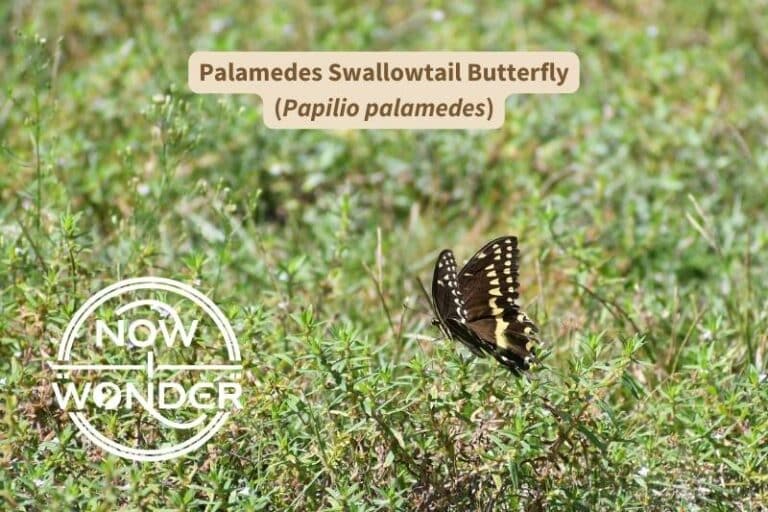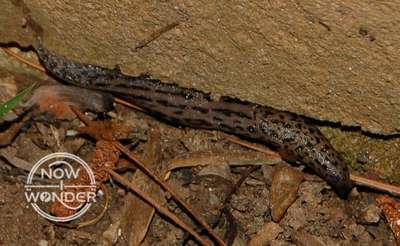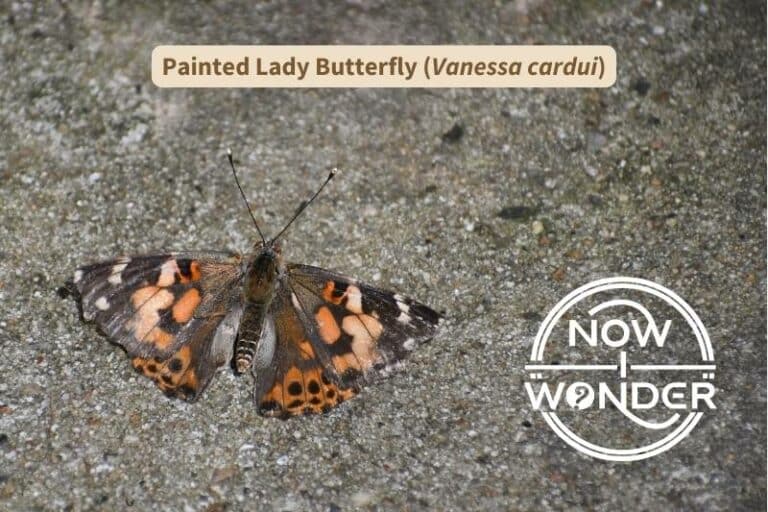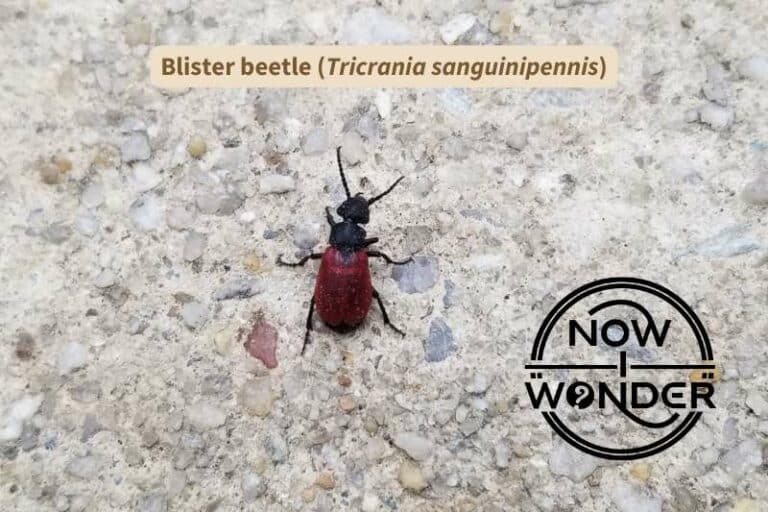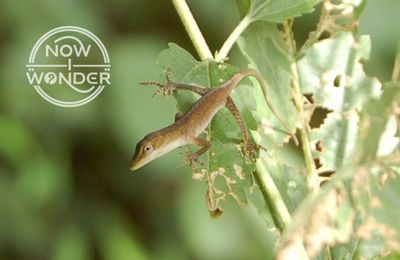Long-tailed Skipper butterflies (Urbanus proteus) have iridescent green bodies, translucent wing patches, and long hindwing tails. Adults have wingspans up to 2 inches (5 cm), feed on flower nectar, and only visit North Carolina in summer; caterpillars are pests of wild and cultivated bean plants.
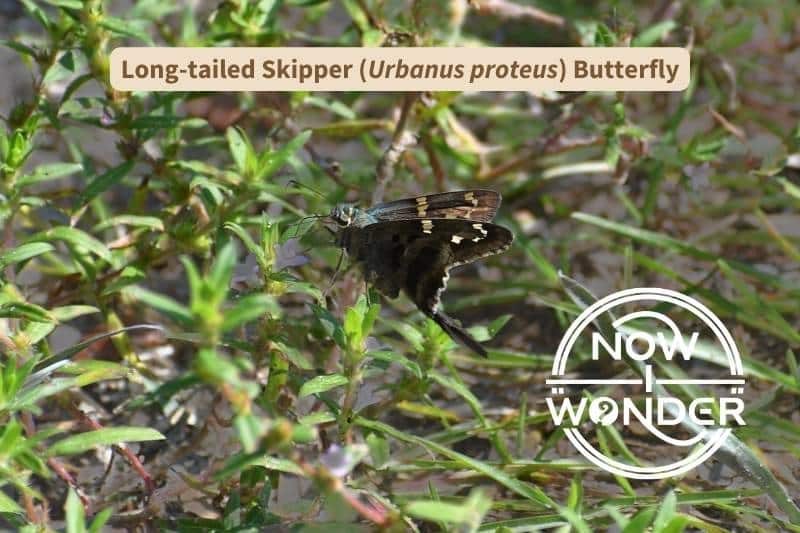
Fun Facts About Long-tailed Skipper Butterflies To Wow Your Friends
- Another common name for the Long-tailed Skipper (Urbanus proteus) butterfly is “Bean-leaf Roller” because U. proteus caterpillars construct shelters by curling leaves of the host bean plants together and securing them with spun silk.
- Each caterpillar may construct several shelters during the course of their growth phase and often build shelters near other Long-tailed Skipper caterpillars (Wagner, 2005).
- Long-tailed Skippers are one of the few butterfly species considered pests by crop farmers and home gardeners.
- U. proteus caterpillars feed on the bean and pea family of plants (Fabaceae) and can do a lot of damage to the agricultural harvest when present in large numbers.
- Long-tailed Skippers (Urbanus proteus) are one of the few skipper species that beginners can readily identify in the field. Amateur naturalists can drive themselves crazy trying to identify most skippers because the different species look so much alike. But Long-tailed Skippers are distinctive thanks to their long hindwing tails (thus their common name) and truly lovely iridescent blue-green coloration.
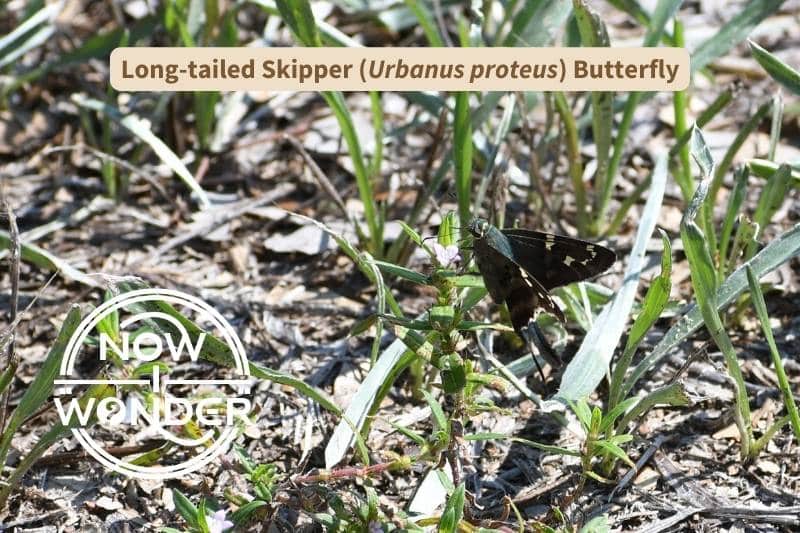
How Are Long-tailed Skipper Butterflies Classified?
| Kingdom | Animalia |
| Phylum | Arthropoda |
| Class | Insecta |
| Order | Lepidoptera |
| Family | Hespiriidae (“true skippers”, subfamily Pyrginae (“spreadwing skippers”)) |
| Genus species | Urbanus proteus |
How Do I Know I’m Looking at a Long-tailed Skipper Butterfly?
Appearance of Long-tailed Skipper Butterfly Eggs
Long-tailed Skipper eggs are yellow, and laid one at a time on the underside of the host plant’s leaves (Daniels, 2003). The eggs are tiny- only about 1/256th of an inch (0.004 inches or 0.1mm) (Pyle, 1981).
Appearance of Long-tailed Skipper Butterfly Caterpillars / Larvae
Long-tailed Skipper caterpillars have yellowish-green bodies speckled with black spots and large, spherical brown heads; they grow to about 1.25 inches (32 mm) (Pyle, 1981).
Their bodies have several stripes that run lengthwise from the second thoracic body segment to the abdominal tip. Moving from the center of the back down to the sides, these caterpillars have a thin, black stripe, a broader yellow stripe farther out, and a white stripe running along the sides of their bodies.
Along with the stripe pattern, the head and first thoracic segment (the part of the caterpillar immediately behind the head) help differentiate Long-tailed Skipper (Urbanus proteus) caterpillars from those of other species.
The first thoracic segment is black and looks like a thin collar. The head is spherical and much bigger than the first few sections of the body, especially the first black thoracic segment. The head is brown and has orange spots separated by a large black spot in the middle, next to the caterpillar’s eyes (Wagner, 2005).
Long-tailed Skipper chrysalids are about 0.875 inches long (22 mm) and are chocolate brown subtly shaded with blue and yellow, and covered in a white, powdery surface (Pyle, 1981).
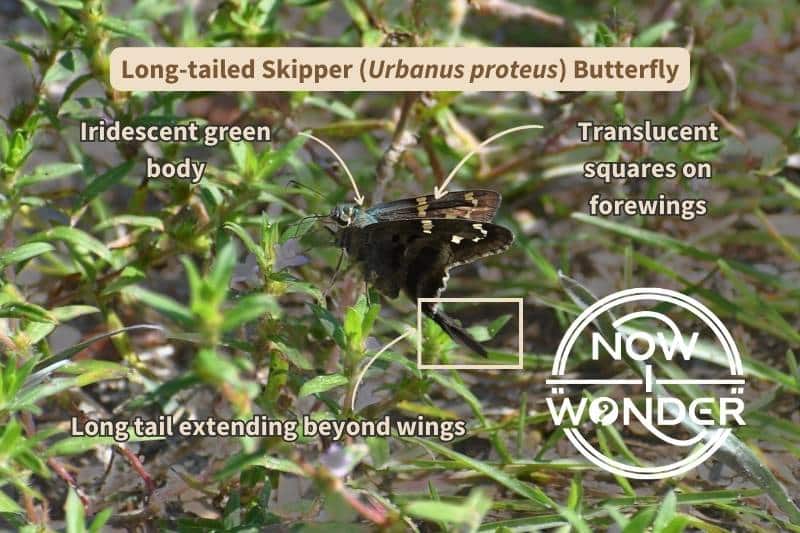
Appearance of Adult Long-tailed Skipper Butterflies
Adult Long-tailed Skipper butterflies have wingspans of about 1.5-2.3 inches (38-59 mm) and both sexes are similar in size and appearance. They have the large, broad heads and hooked antennae characteristic of skippers in general and furry bodies like many butterflies. Beyond this, the appearance of Long-tailed Skippers is unique- these insects are unmistakable when seen in the field in North Carolina.
Long-tailed Skipper (Urbanus proteus) butterflies have a series of transparent, rectangular wing spots in rows along their wings; these wing spots glow in the sun, especially when backlit.
Beyond these transparent wing spots, the two most distinctive features of Long-tailed Skippers are their long hindwing tails and their striking, iridescent blue-green bodies and wing bases.
Their tails extend about 0.5 inches (13 mm) from the edge of their hindwings. Long-tailed Skippers aren’t the only skipper butterfly with this kind of long tail but they are definitely the most common and abundant species seen in North Carolina.
Butterflies live rough lives and their bodies and wings can get worn or torn as they live through their adult stage. Long-tailed Skippers are no exception, especially as their long tails become enticing targets for predators. When newly emerged as adults, the tails of Long-tailed Skippers are long and lush; so much so they almost look like tiny swallowtail birds. But as the adults live their lives, their tails may get shorter and shorter.
The other distinctive field mark is more stable. Long-tailed Skippers are a beautiful mix of brown and green. Their wing sails are rich brown and their bodies and wing bases are bright, iridescent blue-green. They maintain this color pattern throughout their adult lives. While other skipper species have long tails, only Urbanus proteus sports this jewel-bright coloration.
When Can I Find Long-tailed Skipper Butterflies in North Carolina?
Long-tailed Skippers are a tropical butterfly species unable to tolerate cold temperatures during any part of their lifecycle. Therefore, they are seasonal visitors to North Carolina only. They migrate north from, and south to, Florida in a regular pattern, following the changing temperatures.
Adults are most abundant in North Carolina’s natural landscape and home gardens during the hottest summer months of August and September. Occasionally, you can spot a few individuals in the fall, before the first hard freeze, as they flee south through our state towards Florida.
However, even Florida may not be warm enough year-round to suit this species; adult Long-tailed Skippers don’t mate during the winter months but enter “reproductive arrest” until the weather warms again (Opler and Malikul, 1992).
Where Should I Look to Find Long-tailed Skipper Butterflies in North Carolina?
Because they are so cold-intolerant, Long-tailed Skippers are only seen in North Carolina during the warmest summer months and mostly in the southeastern corner of the state. They are most easily spotted in pinelands, fields, home gardens, and fallow agricultural fields as well as along roadsides and utility easement.
Both sexes fly fast and usually low to ground and both are avid nectar feeders and visit a huge number of flowers throughout the day. In between feedings, males perch on low vegetation and fly back and forth patrolling for females with whom to mate. In contrast, females focus on identifying appropriate host plants and laying eggs between feedings.
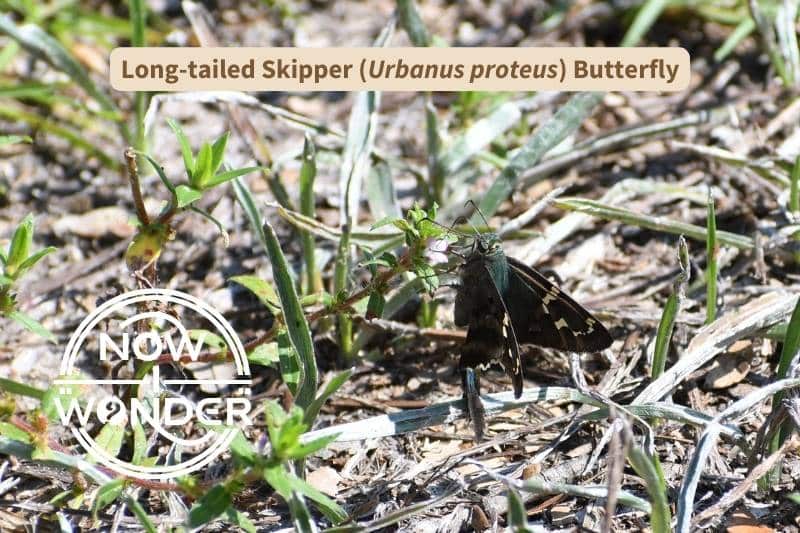
What Do Long-tailed Skipper Butterflies Eat?
Long-tailed Skipper Butterfly Larval Food Plants
Long-tailed Skipper caterpillars feed on many families of plants, especially those in the legume and pea family (family Fabaceae). In North Carolina, wild plants in the wild legume and pea family include butterfly pea (Clitoria mariana) (Wagner, 2005) and kudzu (Pueraria montana) (Daniels, 2003).
Unfortunately, humans also eat legumes in the form of beans, so this species is considered a pest by bean farmers and home gardeners.
Adult Long-tailed Skipper Butterfly Food Plants
Adult Long-tailed Skipper butterflies feed on nectar and visit a wide variety of flowers. They especially love Lantana (Lantana, family Verbanaceae) and Shepherd’s Needle (Bidens pilosa) (Opler and Malikul, 1992).
References
Daniels, Jaret C. 2003. Butterflies of the Carolinas. Cambridge, MN: Adventure Publications, Inc.
Opler, Paul A. and Malikul, Vichai. 1992. Peterson Field Guides: Eastern Butterflies. New York, NY: Houghton Mifflin Company.
Wagner, David L. 2005. Princeton Field Guides: Caterpillars of Eastern North America. Princeton, NJ: Princeton University Press

